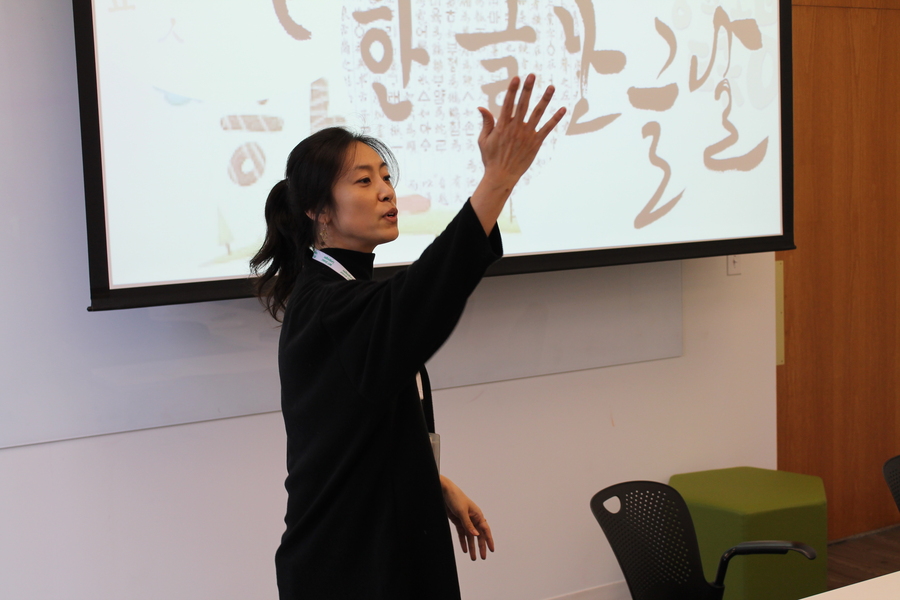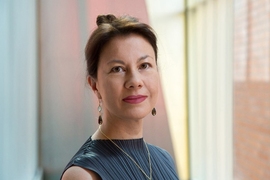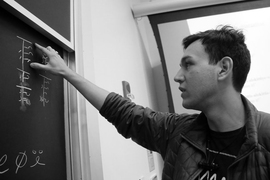Students at MIT will now be able to take their Humanities, Arts, and Social Sciences concentration in Korean. The new concentration extends the options for Asian languages at MIT, which also include Japanese and Mandarin.
In response to long-term student demand and the growing importance of international activities in Korea, MIT Global Languages identified Korean as a key area of strategic growth in 2016. Following a successful four-year pilot, Korean was added to the Global Languages curriculum in 2020, and enrollments have been robust. Global Languages Undergraduate Academic Administrator Joyce Roberge explains that the new Korean concentration “will be a welcome option for students who have responded enthusiastically to the Korean classes.” In addition to the Korean concentration, students also have the option to pursue a minor or major in Asian and Asian Diaspora Studies.
Professor Emma Teng, director of Global Languages, who serves as the faculty supervisor of Korean, worked closely with MISTI-Korea Program Director Matt Burt and Wellesley College associate professor of Korean Sun-Hee Lee to support the Korean curriculum in its pilot years. Teng celebrates the new concentration as an “important step in advancing Asian studies at MIT and supporting students seeking international experiences in an area of the world that has both cutting-edge innovations in science and technology and rich cultural histories.”
Students have a host of reasons for studying Korean. South Korea is of increasing economic and geopolitical importance on the global stage, and Korean has been designated a strategic language by the U.S. government. Recognized as an innovation leader, due to high R&D investment in information and communication technologies, South Korea has special relevance to MIT students. Many students are motivated to take Korean in order to participate in MIT International Science and Technology Initiative (MISTI) opportunities. The Jae S. Lim MIT-Korea Program offers students all-expenses-paid internships in top companies and research institutes in South Korea, as well as intensive teaching opportunities through Global Teaching Labs over Independent Activities Period.
Teng further notes that “South Korea’s response to the Covid-19 pandemic makes evident why this country is a vital model that we must study. But many people don’t know about the long history of scientific inventions in Korea dating back at least to the 7th century, in astronomy, mathematics, naval architecture, and many other fields. In fact, movable metal type was invented in Korea in the early 13th century, well before Gutenberg.”
Interest in Korean popular culture has been another draw for students. Ara Adhikari, electrical engineering and computer science major from Manassas, Virginia, comments: “Like many others, my first exposure to Korean culture was due to the popular Korean Hallyu wave.” “Hallyu” is the “Korean wave” in K-dramas, K-pop, cinema, and other pop culture phenomena. She continues, “This naturally drew me to take Korean I at MIT. After my first Korean class, I enjoyed learning about the Korean language and culture so much, I continued to take all Korean classes offered at MIT.” Adhikari comments, “I'm super excited to hear that Korean [now has a] concentration.”
Hee-Jeong Jeong, senior lecturer in Korean, explains that “in addition to the Korean Wave, another area of interest for MIT students is Korea’s rapid economic growth and its IT industry. Students can learn Korean and experience Korean life in Korea through participation in MISTI-Korea.” Jeong explains that she takes these factors into account in designing the curriculum. She explains, “MIT students’ curiosity about Korea is not simply about their favorite actor or singer; they have deeper interests and motivations for learning about Korean culture, society, and history.”
Associate Professor Paul Roquet (comparative media studies/writing) says “It has been great to see not just students’ strong interest in contemporary South Korean media, but also their eagerness to dig deeper into understanding where it's coming from, what it's made out of, and what is driving it forward.” Roquet teaches two classes in English that examine the aesthetic, cultural, and political histories that led South Korean pop culture and media to become such a global force today: 21G.067 (Digital Media in Japan and Korea) and 21G.094 (Cinema in Japan and Korea). “For example, in the cinema class this semester,” he says, “we are exploring the different historical trajectories flowing through a film like Bong Joon-ho’s widely acclaimed 'Parasite' (2019), tracing how the film draws extensively from earlier Korean cinema while reworking this cinematic legacy to speak to contemporary South Korean social concerns.”
Jessica Shi describes her decision to start taking Korean at MIT as a “whim.” She says, “I wanted to study a new language, and I admired the elegancy of the Korean writing system.” But once she started taking the Korean classes, she wanted to continue because “the class quickly became the hour I looked forward to most each day.” Shi, a senior, is a double major in mathematics and computer science from Andover, Massachusetts. She says that a favorite class activity has been the use of video clips from a variety of TV shows, and her awareness of gradually being able to understand more and more.
When asked if learning Korean is “hard” Jeong responds, “Compared to European languages, it takes more time for English speakers to master Korean. However, language learning is a lifelong process, so students need to enjoy learning a language without feeling stressed about it. I try to make classes fun but conducive to language acquisition, so students don’t lose interest in engaging in the Korean language.”
In fact, Korean is known for having the most “scientific” alphabet — Hangeul. Hangeul is famous for being easily mastered in a single day. MIT students like to boast they can learn it in half a day.
Hee-Jeong Jeong has been very active in promoting extracurricular activities to engage students interested in Korea and the Korean language: from sponsoring annual Hangeul Day (Korean Alphabet Day) events, speech contests, film viewings, lunch tables, and more. In 2019, a student club was formed for those interested in Korean language and culture.









